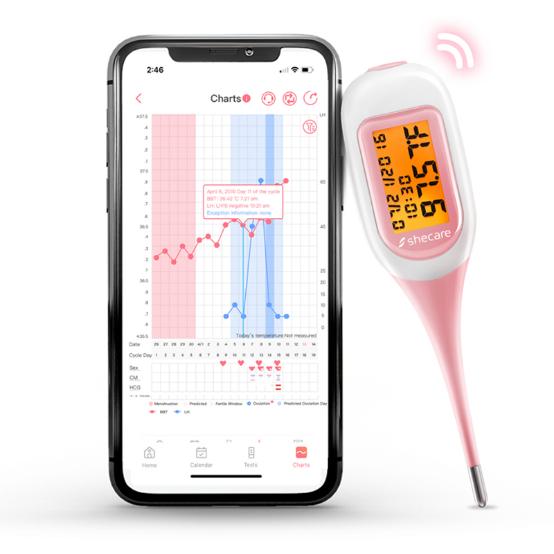In the realm of womaen's health, the term basal body temperature (BBT) holds a pivotal role, acting as a silent messenger conveying intricate details about reproductive well-being. BBT refers to the body's temperature at rest, a metric that is particularly informative when measured immediately upon waking. This comprehensive guide seeks to delve into the nuances of BBT, unraveling its significance and applications in the realm of reproductive health.
Basal body temperature fluctuates throughout the menstrual cycle, and a keen understanding of these variations is essential for harnessing its potential. Typically ranging from 97.0°F to 97.7°F before ovulation, BBT experiences a subtle yet crucial rise to 97.8°F to 98.2°F after ovulation. This delicate shift serves as a reliable indicator of hormonal changes, making BBT an invaluable tool in fertility tracking.
Ensuring the accuracy of BBT measurements is paramount for leveraging its potential in reproductive health management. The following guidelines outline an effective approach to BBT testing:
Precision begins with consistency. Measure your BBT at the same time every morning, ideally before engaging in any physical activity. This meticulous approach ensures that the recorded temperatures are comparable and reflective of your body's natural rhythm.
Investing in a specialized basal thermometer is a strategic move toward accurate BBT tracking. Unlike conventional thermometers, the bluetooth basal thermometer is designed to detect minor temperature variations with heightened precision, enhancing the reliability of your recorded data.
Transforming BBT tracking into a structured practice involves meticulous record-keeping. Maintain a dedicated BBT chart or leverage fertility tracking BBT chart app to log your daily readings. This systematic approach not only facilitates analysis but also empowers you with a comprehensive overview of your menstrual cycle.

BBT emerges as a natural ovulation predictor, offering valuable insights into the fertile window. Pre-ovulation, BBT typically hovers at a lower range, with a discernible increase post-ovulation. This elevation is attributed to the release of progesterone, a key hormone produced after the release of an egg.
Beyond its role in pinpointing ovulation, BBT is a cornerstone of fertility awareness. The days leading up to the temperature rise signify the fertile period, providing couples with essential information for conception endeavors or those adhering to natural family planning methods.
The utility of BBT transcends reproductive planning; it extends to the detection of hormonal irregularities. Anomalies in the temperature pattern may serve as early indicators of conditions such as thyroid dysfunction or polycystic ovary syndrome (PCOS), prompting timely medical intervention and personalized care.
In conclusion, mastery of basal body temperature tracking is a journey toward informed reproductive health. By adhering to precise measurement techniques, leveraging specialized thermometers, and maintaining meticulous records, individuals can unlock the full potential of BBT as a tool for predicting ovulation, optimizing fertility, and identifying hormonal imbalances.
Empower your reproductive health journey with the precision and insights offered by basal body temperature tracking. Whether you are actively navigating the path of conception or prioritizing natural family planning, BBT stands as a reliable ally in achieving optimal reproductive well-being.